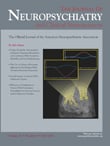In my first week of medical school, an anatomy professor told us that he would teach standard anatomical names such as “uterine tubes,” but he despaired of our remembering them in the future. We would forget them all, he prophesied, as soon as we stepped onto the wards and some venerable clinician peered at us over his glasses to say, “We call those Fallopian tubes.” Physicians seem to love eponyms.
In this fascinating book, Douwe Draaisma presents the stories behind 12 well-known eponyms in neuropsychiatry. Draaisma is a professor in the history of psychology at the University of Groningen in the Netherlands. He includes Broca’s area and the cortical Brodmann areas in addition to nine diseases, named after Charles Bonnet, Parkinson, Jackson (Jacksonian epilepsy), Korsakoff, Gilles de la Tourette, Alzheimer, Clérambault, Capgras, and Asperger. He also includes Phineas Gage, the famous man who lived after an iron rod exploded through his frontal lobes.
Gage is arguably out of place, as there is no Gage area or Gage syndrome, but the story behind the story illustrates several themes Draaisma identifies in the path from discovery to eponymous notoriety. For starters, Gage’s medical history is so well known that its veracity is rarely questioned, but the truth is at once stranger and less strange than the commonly accepted version. This is not unique to Gage’s story; distortions and misattributions are the rule rather than the exception in the history of medical names. Even this observation has an eponym: Stigler’s law (“No scientific discovery is named after its original discoverer”; p. 332).
Draaisma points out other drawbacks of eponyms. For one, they are likely to forever stay biased toward dead men (as in “not women”) because most eponyms honor clinicians or scientists from the 19th century. In fact, the latest eponym Draaisma discusses is Asperger’s syndrome, a nomenclature that ignores the prior contribution of a female physician (Ewa Ssucharewa). Yet despite many predictions of their demise, eponyms are still very much with us. Perhaps our stubborn persistence in calling anatomical features (and tests and diseases) by someone’s name is a desperate attempt to convince ourselves that we—at least some of us—can achieve cultural immortality.
I have a few quibbles with the book. In a few places I thought the author’s diction was awkward. But these spots were few and could as easily belong to the translation; overall the book read clearly. Second, at times the author used “neurological” for “biological/nonpsychological,” which is a common usage but always makes me wince. Finally, I found a couple of factual errors in the chapter on Tourette’s syndrome. But these are minor issues.
My institution’s medical library holds over 20 books on medical eponyms. What does Disturbances of the Mind add? This is not a dictionary with spare summaries to be kept on the shelf; it is a collection of stories that makes enjoyable reading. I think the choice of eponyms and the level of detail will please many readers of this journal.

